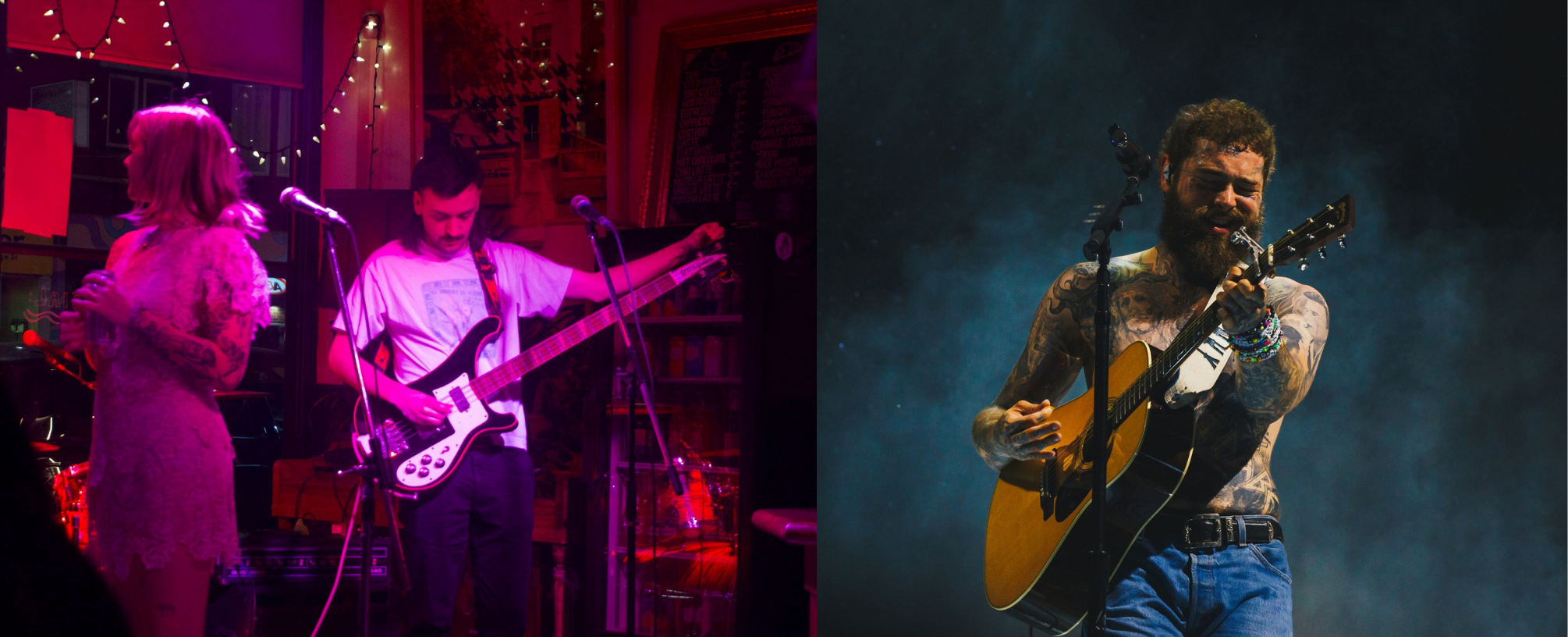A glimpse into two university students and photographers’ experience shooting live performances and participating in music culture.
To delve deeper into the relationship between photography and live music events, Concordia alum Sydney Gastaldo and third-year student in professional music at Toronto Metropolitan University, alongside third-year photography student Jordan Markle at Dawson College, proudly share their respective journey taking professional photos of live concerts.
Being in charge of capturing a moment in time, especially in an atmosphere as lively and busy as a live music event—both visually and sonically—is no easy task. When asked about photographers’ aim in capturing the energy and emotion of a performance in any venue, Markle said that he really tries to focus on capturing the emotion and energy of live music in Montreal, no matter its scale: “Each picture is carefully constructed in a way that channels the energy and atmosphere of the event, giving viewers a sneak peek into what it was like to actually be there.”
As for Sydney Gastaldo, she personally always tends to come back to the concept of movement and DIY approach in photography since she doesn’t like photos that look staged. “Some of this happens in post/editing but some of this experiment can happen in the moment through experimenting with aperture, angles, exposure etc,” Gastaldo shared. She also noted how some of the best photos she’s taken have come from in-between moments like while the show is being set up, the singer is talking to the crowd between songs, or when the stage is being set up for the next track or right at the end of the act. “It can be a great way to capture authenticity from an artist as they tend to be less “on” during those moments,” she said.
There can also be a process of preparation that happens before the action of a show which can impact how the approach of photographing will unpack. “I start preparing by taking a deep dive into the artist’s discography meaning I’m listening to them all day before the show,” Jordan Markle stated. By doing this, he can understand the emotion and feeling of what the artist is trying to portray to their audience on a deeper level and then capture that energy authentically.
Logistic preparation is also crucial. In regards to this, Gastaldo always ensures she has enough storage on her camera or enough film, as well as charged batteries and a prepared kit. Moreover, she makes sure to back up anything from past shoots and to develop all her older films beforehand. Checking out the weather if it’s an outdoor show is also part of her routine.
Challenges can be encountered when documenting the ephemeral nature of live performances. Markle shared how a venue might only allow photographers access to the photo pit for the first three songs. If this is the case, Markle avoids taking the same type of photos for all three songs to offer more variety in the shorter amount of time that is offered to him. To essentially counter this problem, he experiments with different techniques and employs varied shooting methods, sometimes using long exposures or action freeze frames.
As for Concordia Alum Sydney Gastaldo’s biggest challenge, the lighting for underground or DIY/indie shows can be quite unpredictable. “It can be really hard to capture the in-person feel of a show when it’s happening in low lighting or with flashing light / over-saturated set design,” she said. Matching the pace of any movements on stage is also something to navigate, but these challenges, Gastado said, are just “trial and error.”
A visual artist, in this case, a photographer, retains a certain role in preserving and celebrating music culture since it acts as the bridge between the performing artist and fans, the internet, tabloids, etc. When asking Sydney Gastaldo and Jordan Markle how they see their work contributing to this broader cultural narrative, they provided similar opinions.
Markle seeks that his work tell someone’s story and preserve memorable moments for years to come. “I see it as a means of capturing the intersection of music, art, and human experience […] whether it’s through documenting live performances, capturing intimate moments backstage, I want my photos to tell stories,” he said.
Gastaldo shared how for her, photography in the realm of live music cements these seemingly small moments that can often feel big for those attending. Moreover, her work focuses on underground and more obscure kinds of music or smaller bands/artists existing in the local scene. “A lot of them split apart and/or don’t end up making a living out of their craft and all that is left of their work is people’s memories and photographs/videos. But regardless of how successful they may be in a broader sense, the impact that their music had on their fans and the community and the beauty of their live performances still means something and I think capturing that and cementing it in history can be beautiful,“ Gastaldo proudly answered.
From utilizing a small-budget camera or owning professional high-grade equipment, from capturing a small local stage to a large national music festival, live music photographers, like Sydney Gastaldo and Jordan Markle, make sure to remain intentional with their craft. They deliver the most authentic representation of the evening through passionate intentions for the art and story behind each frame.
